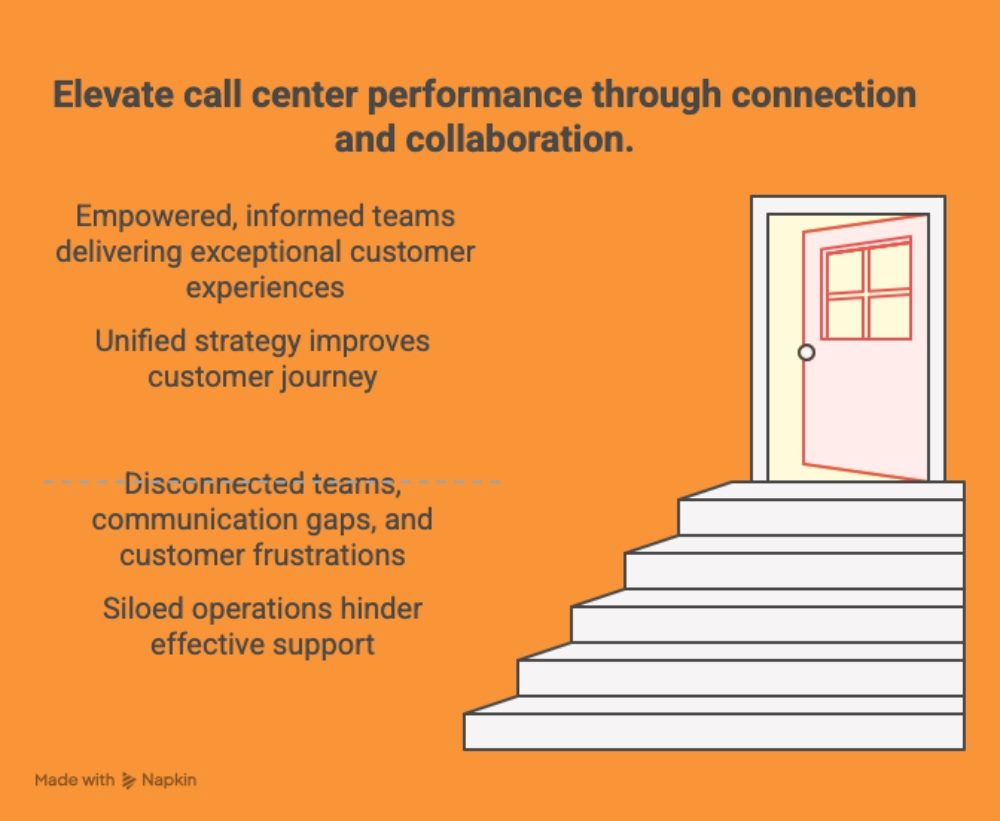The Gist
- Don't rule out the frontline. Contact centers are often overlooked, yet when integrated into CX strategy they become vital sources of customer insight and loyalty.
- Back your agents. Seven practical actions—from listening to live calls to hot-desking—help bridge silos, boost morale and improve service.
- Contact center as the heartbeat. True transformation comes from embedding contact centers into the customer lifecycle, aligning daily operations with strategic goals.
As Ricki Lang, VP at Quantum Metric, recently observed in an interview with CMSWire, “too often, your customers are left feeling trapped instead of supported.”
The article noted that the flow of information should not only move from digital teams to call centers, but also in the other direction—using the contact center as a resource to pass customer insights back to digital teams.
While AI continues to dominate the customer experience agenda in 2025, we must not lose sight of the human dimension of customer contact. For this reason, organizations should focus on practical steps to integrate the contact center more deeply into product development and customer service design initiatives.
Table of Contents
- When Product and Customer Support Are Miles Apart
- Why Communication Breaks Down in Customer Service
- 7 Actions to Elevate Your Call Center
- From Operational Fixes to Strategic Transformation
- Final Thoughts: Treating Contact Centers as Strategic Hubs
When Product and Customer Support Are Miles Apart
In my career as a product owner at British Telecom and in other organizations, I have managed products and services that included specialist contact center support teams. One recurring challenge was geography. At BT, for example, commercial and marketing teams were based in London, while call centers operated in Doncaster, Leeds and Sheffield.
This setup created cost efficiencies and leveraged a valuable cultural insight: customers often judged regional accents to be more trustworthy and approachable. Yet, despite this advantage, physical distance often created silos that damaged communication and alignment.
When product and marketing teams are not closely connected with contact centers, a number of issues quickly arise:
- Products and services are launched without prior communication or training
- Customer problems are not fed back to product owners
- Contact center staff feel isolated and undervalued
- Major customer issues remain unresolved or escalate unnecessarily
Related Article: The Cloud-Based Call Center Boom: Features, Benefits and Top Solutions
Why Communication Breaks Down in Customer Service
Training is critical, but it’s rarely possible to take out entire customer support teams for extended sessions. Meanwhile, motivation and a sense of being valued often come from real, physical contact with product teams—a challenge when distance makes this uneconomical.
So what can leaders do? Based on my experiences, here are seven actions that can significantly improve customer service quality while boosting the engagement and performance of contact center staff.
7 Actions to Elevate Your Call Center
1. Connect With Your Contact Center Manager
This is the starting point. Introduce yourself (whether you’re a product manager, CX manager or in operations) and explain your aim is to improve communication. Listen to their perspective and understand their team’s biggest challenges.
2. Visit the Contact Center
Physical distance often leads to organizational distance. Once you’ve built rapport, arrange a visit. Meeting in person allows you to discuss processes, clarify expectations and show customer support in a way that email or video calls cannot.
One of the most impactful decisions I made was to spend one day every two weeks hot-desking in the contact center. Over six months, this approach resolved communication gaps, strengthened relationships and developed a highly motivated specialist team. Just as importantly, it showed the team that I was fully invested in their work, boosting confidence, engagement and performance.
3. Get to Know Team Members Individually
Trust comes from relationships. By getting to know people one-on-one, you’ll quickly see who the informal leaders are, who thrives on solving customer problems and who goes the extra mile. These insights are invaluable when building a strong, motivated team culture.
4. Listen to Customer Calls
Data dashboards are important—but so is hearing customers’ voices in real time. Sitting alongside agents while listening to live calls makes the frustrations, challenges and emotional tone of customer interactions far more tangible. Pairing quantitative data with qualitative experience brings customer insights alive and sparks new ideas for improvements.
5. Close Communication Gaps
Two of the biggest frustrations for contact center staff are:
- Not knowing when product launches or updates are happening.
- Lacking clarity on product features and fixes.
This creates anxiety and undermines confidence. My solution was to write product briefs specifically tailored for contact center teams, giving them the knowledge they needed to respond effectively.
6. Solve Problems on the Spot
When sitting with contact center teams, I didn’t just observe. If a call was put on hold so the agent could ask me what to do, I treated this as on-the-job coaching. It bridged the training gap—since managers can’t easily take agents off-rotation for workshops—while empowering staff to make better, quicker decisions, whether that meant offering refunds, replacements or alternative solutions.
7. Involve Call Centers in Customer Journey Mapping
Customer journey mapping is more than a design tool—it’s a way to connect strategy to day-to-day operations across the organization.
Including contact center representatives in the mapping process ensures that frontline insights feed directly into product and service design. Agents know first-hand where processes break down, and their input helps refine journeys to eliminate customer pain points.
Related Article: Customer Journey Mapping or Optimizing? Why the Answer Is Both
From Operational Fixes to Strategic Transformation
These actions create immediate operational improvements. But in the long run, organizations must evolve beyond fixes and embed customer-centricity into their core strategy. This requires working with the customer lifecycle as a central framework—integrating it into planning, translating and executing strategy.
As Ricki Lang emphasized, “the organizations who will see the greatest impact on customer satisfaction are the ones who are building those connected, cohesive experiences for customers.” By structuring your strategy around the customer lifecycle, your CX strategy becomes truly holistic.
Final Thoughts: Treating Contact Centers as Strategic Hubs
AI will continue to shape the future of CX, but the human dimension will remain critical. Contact centers are not just cost centers—they’re strategic hubs of insight, innovation, and loyalty. When leaders invest time in connecting, listening and collaborating with these teams, the payoff is not just improved support—it’s stronger products, more motivated employees and customers who feel understood, valued and emotionally connected with your brand.
Learn how you can join our contributor community.

